The planet is like a woman in pain of childbirth. We cannot ignore the climate change. What can we do in our small neighborhood? Here is an impression and some ideas:
A plan is coming to the surface in which time unfolds and details fall into place.
Having a shelter is something to be happy about. The way the wind blew us into this house was special in itself.
It was Nov. 1st when we spent our first night here in this house, and much of that time has been spent in the garden—not that it was hard work. We just let what was already there grow a little, removed what there was too much of (such as tiling), and added a little bit of order.
Our garden plan?
Leave alone that which is firmly established.
Move a plant if it looks better elsewhere.
There is no such thing as unwanted weeds, but to prevent any wild growth—of, for example, mint—put it in a pot.
Receive what is offered to you.
Create harmony.
Avoid plastic.
Avoid garden centers as much as possible with the exception of DIY inspiration.
For us, a nice organic garden consists of the following:
- The Take-a-Nap Garden House/Growing-Ideas Corner/Kitchen Chapel
Cost: 170 euros from eBay plus 50 euros for a friend’s help with transportation. Thanks, Jan!
Benefits: I think (almost) all is revealed in the title. In our family, periods of work are alternated with small afternoon breaks. Juul Martin, the author of the book World Changers, and whose work has roamed around our house for years, offered a toddler bed on a popular social media network. One fine day, we picked it up, and guess what: It fits perfectly inside the garden house down to the centimeter. From the day of its arrival, it is no longer a toddler bed. We take turns sleeping in it to finish off the night (only applicable for family members who are less than 180 cm tall), develop ideas, or just relax. A standing writing table and an icon complete this quiet retreat that is functional for the whole family. It’s a breeding ground for ideas, and prayers go right through the roof there because it’s so thin. The sweet singing of blackbirds makes for a blissful soundtrack for drifting off to sleep.
- The seating area with green grass so you can lie down and look at the sky like a starfish
Cost: Nothing! The neighbors said they had six square feet of green grass left and were about to get rid of it. Say no more! The same day, 40 tiles were removed, the soil was fertilized, and the grass was laid. Thank you, Lisbeth!
Benefits: It increases the greenery in the garden, making us feel more at home. Gray tiling is not nice (in our humble opinion). What could be more wonderful than—after you have finished your nap in the garden house—relaxing on the green grass under the open sky?
- The Clothesline
Cost: Approximately 5 euros at the Blokker for a washing line and a few hooks. That’s it.
Benefits: Much joy, plain and joyful living, and a lot of ideas blossoming between the laundry lines. If you know me even a little, you will know that I am an avid clothesline lover. Jelle has now stretched a line for me over the full length of the garden, from the house to the shed. It is only about seven meters, but three times that is more than enough to dry all the laundry. We do not have a dryer. This is way better for the environment and an ancient way of drying laundry. I’ve noticed that alternating writing and house-garden-kitchen activities makes me much more productive. Maybe it is because I get some distance from my work. It seems to do my brain good. “
- Permaculture vegetable, fruit, and herb garden
Cost: 10 euros for seeds.
Benefits: Judith has removed a lot of tiles from the garden to give the greenery more space. Here, you can see her wooden cross on the wall as a reminder of who gave us this garden. “Unless the Lord builds the house [and garden], your labor is in vain.” – A loose translation of Psalm 127
For us, permaculture in the vegetable garden means applying three basic principles: rest for the soil (or no digging), protecting the soil by covering it, and providing a diversity of plants, herbs, and flowers so that one nourishes the other. Judith has built low paths with wood chips to prevent weeds, which means that the low places in the garden absorb a lot of water. Branches mark out small plants and pathways, so dead wood is useful. Only a little black soil is visible so that not many weeds can grow and the plants that are there retain their moisture.
- The Rain Column
Cost: Again, nothing!
For us, there are no costs involved as it is a neighborhood garden project, but this is a somewhat more expensive and therefore sustainable rain column of 350 euros. It easily collects 400 liters of water.
Benefits: The rainwater does not enter the sewer underground but is collected in this rain column. Oh! What a wonderful feeling to hear the patter of the rain and to know we will be able to use the rainwater! We don’t have to spray with tap water to wash the car. The rain column is fixed to the wall of our house because it is central to the neighborhood garden. We all use it as much as possible as a neighborhood community.
- The bee, bug and flower gang.
Cost: A butterfly bush to make our garden even denser—ten euros or so.
Benefits: Really everything grows in our front yard. The neighbor who likes a straight Dutch garden may raise an eyebrow, but we enjoy the natural wildness of it, and we see ourselves as guests of the critters that were flung down here before us in this residential area by the Wind. After all, the Jonker Sloetlaan was once a meadow where their ancestors lived. We are guests. “Life is all about perspective”
- The hen house with chickens
Cost of the loft: Free! It was a donation from sister Rieneke.
Cost of chickens: Again, free. They were donated by my parents who raised the chickens this spring. Gauze and some accessories came from the pot of the neighborhood garden. Feed and sawdust: 10 euro. Depending very much on where you live and how you get your supplies. (from the store, or from a farm nearby, the latest is always my favorite;-)
Benefits: We were sorry that there was such a tiled garden next to our house, but of course, we can’t just extend our garden. Municipal land is municipal land. Thus, the plan to expand the neighborhood garden with a chicken coop was immediately approved by the municipality of Ede! Now, we are the host family of these cheerful guys, who will hopefully provide us and others with eggs next spring. The chickens can have the eggshells again, and the chicken manure goes into the garden. In this way, we create a nice cycle of organic materials.
- The compost heap
Cost: Nothing.
Benefits: Hidden behind the greenery is the compost heap. Jelle assembled the bin from old pallets, which somebody gave us. We did some research as to how something like a compost heap works and our neighbor Kristiaan filled us in on the details. With time and patience, you will have fertile compost that you can return to your garden. Oh, what joy when you let that good, freshly scented black earth slide through your fingers! But our compost heap is not that far along yet. The neighborhood garden already has compost, and we will take that as an example. These slow processes in the garden teach us to slow down.
Finally, what is a garden without birds? (Preferably not in a cage but just nice and free.) We have a special garden friend: The Blackbird. He does not allow himself to be captured on camera, but what a sweetheart he is. He observes us even more than we observe him. In the morning, he sits on the corner of the roof to greet us. When Judith works in the garden, he has flute-like conversations with her that sound very nice/“gemutlich.” It gives us Franciscan vibes.
I could easily dwell on each of these seven elements for fifteen minutes.
Which of these seven elements could you use in your garden?
If you have a question, feel free to ask!
Greetings, from my garden to yours (even if it’s just a balcony—you can make something out of it!)
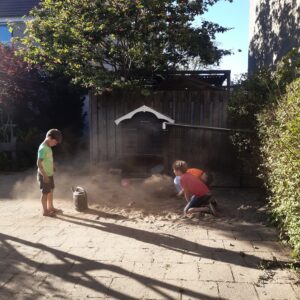
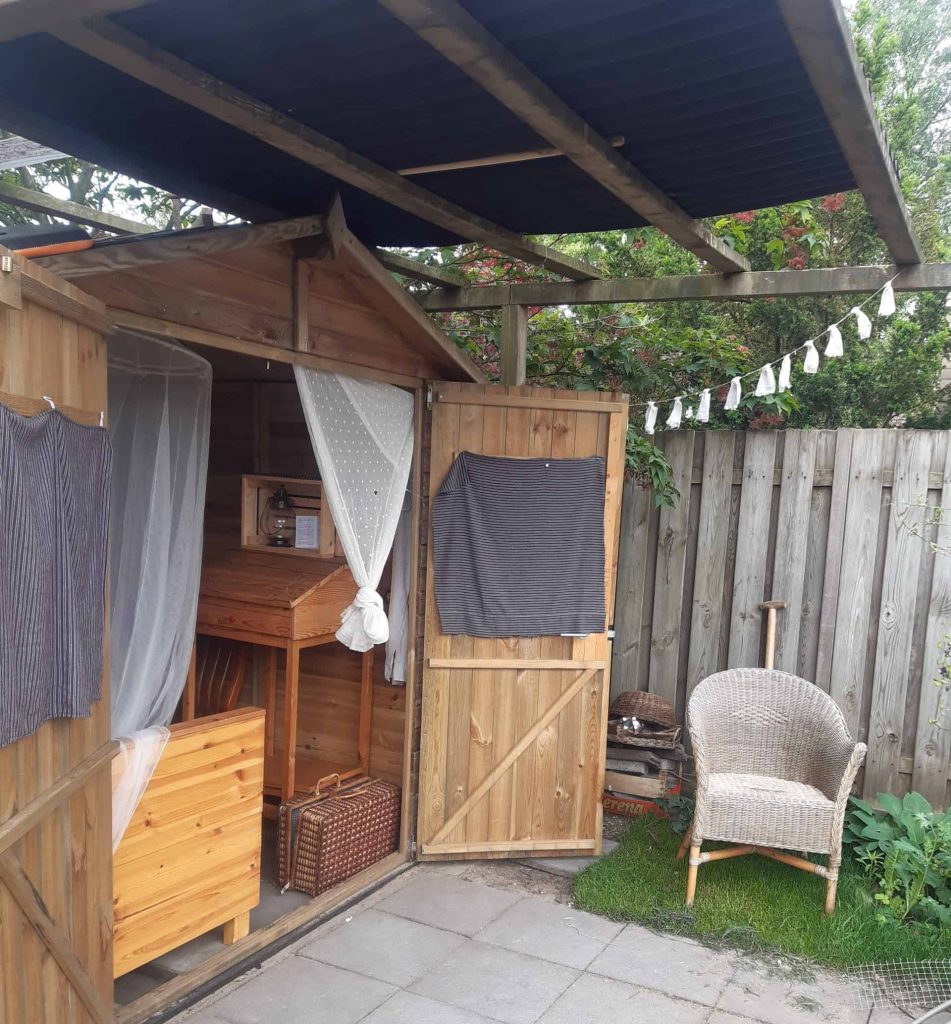
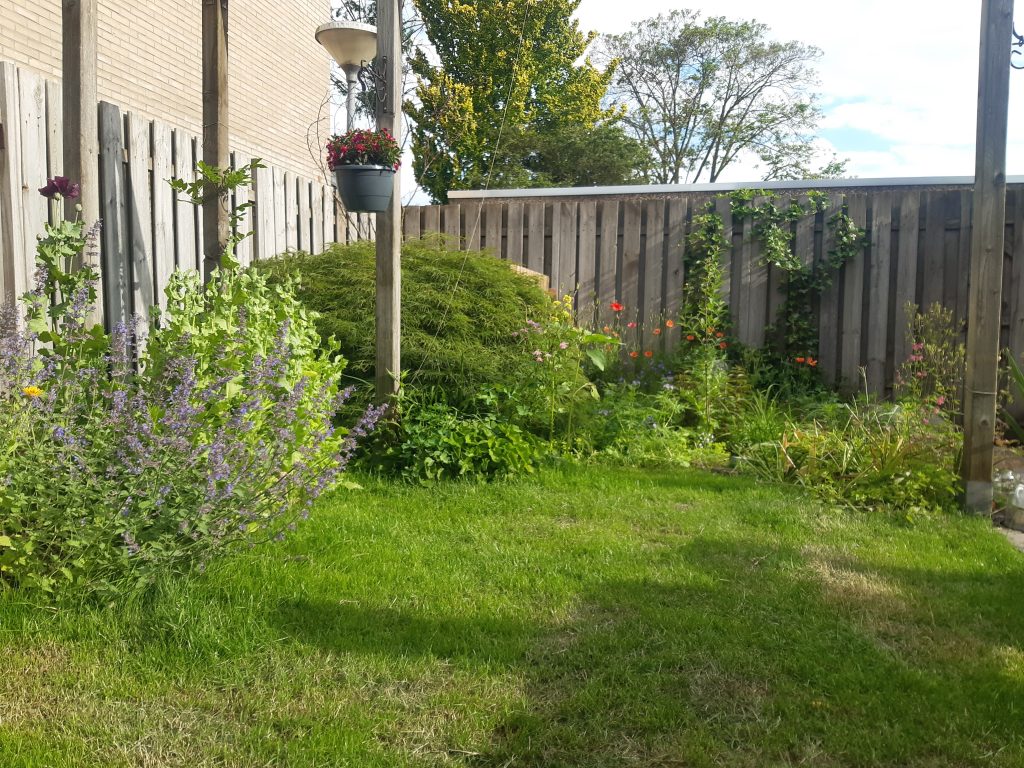
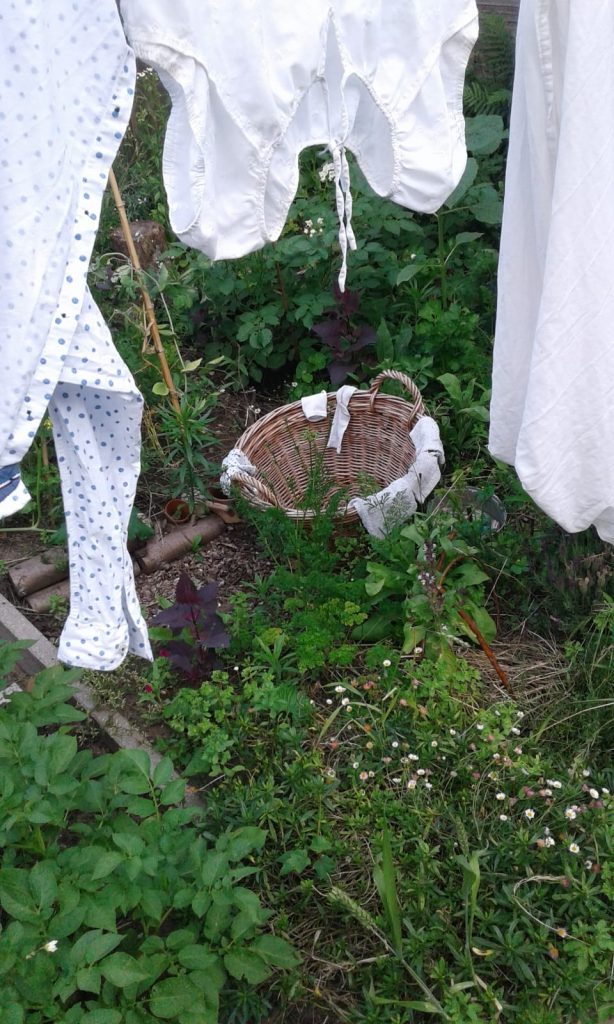
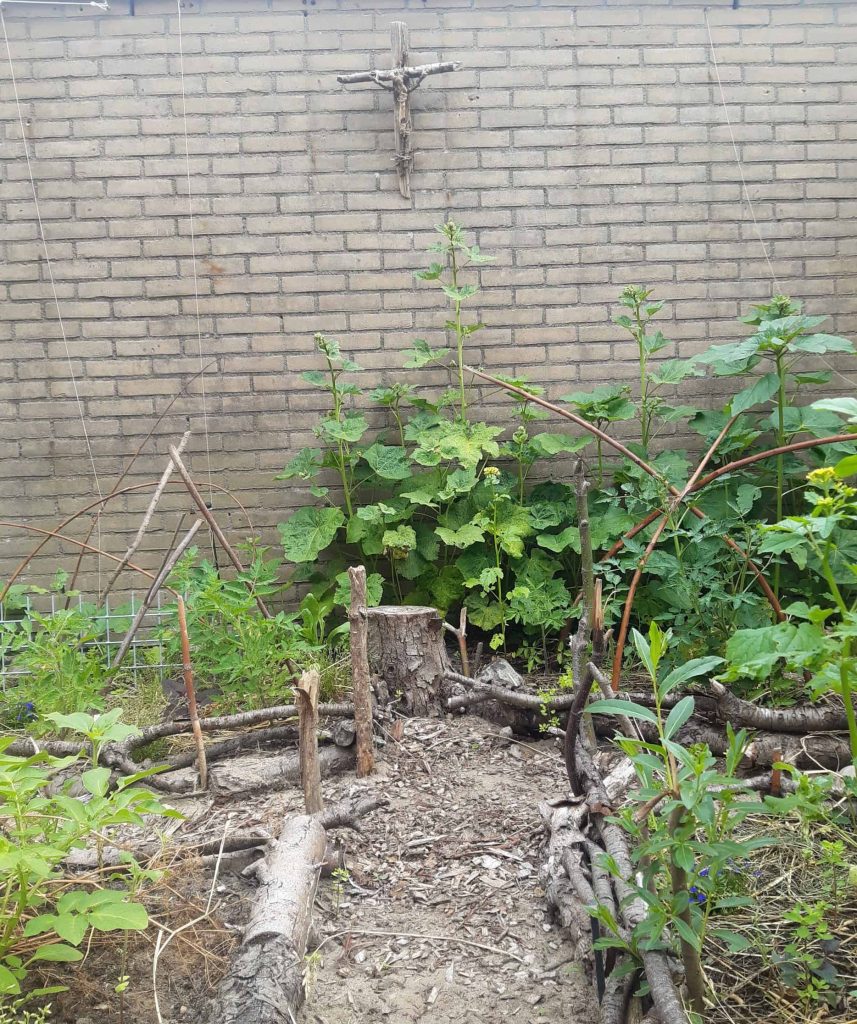
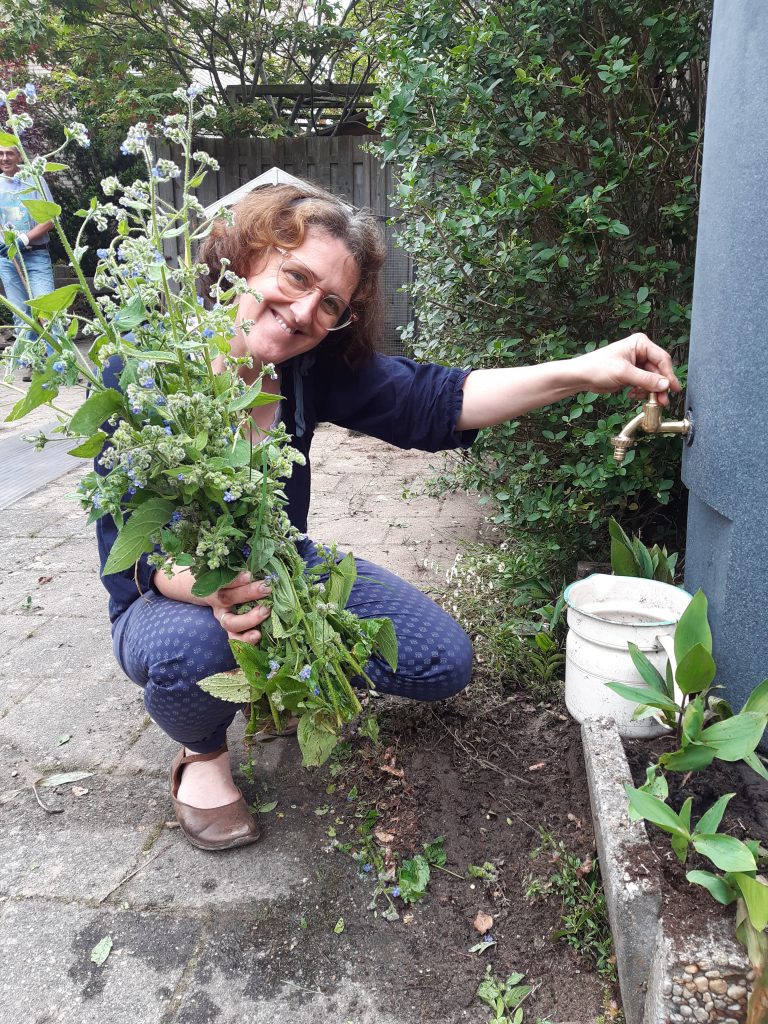
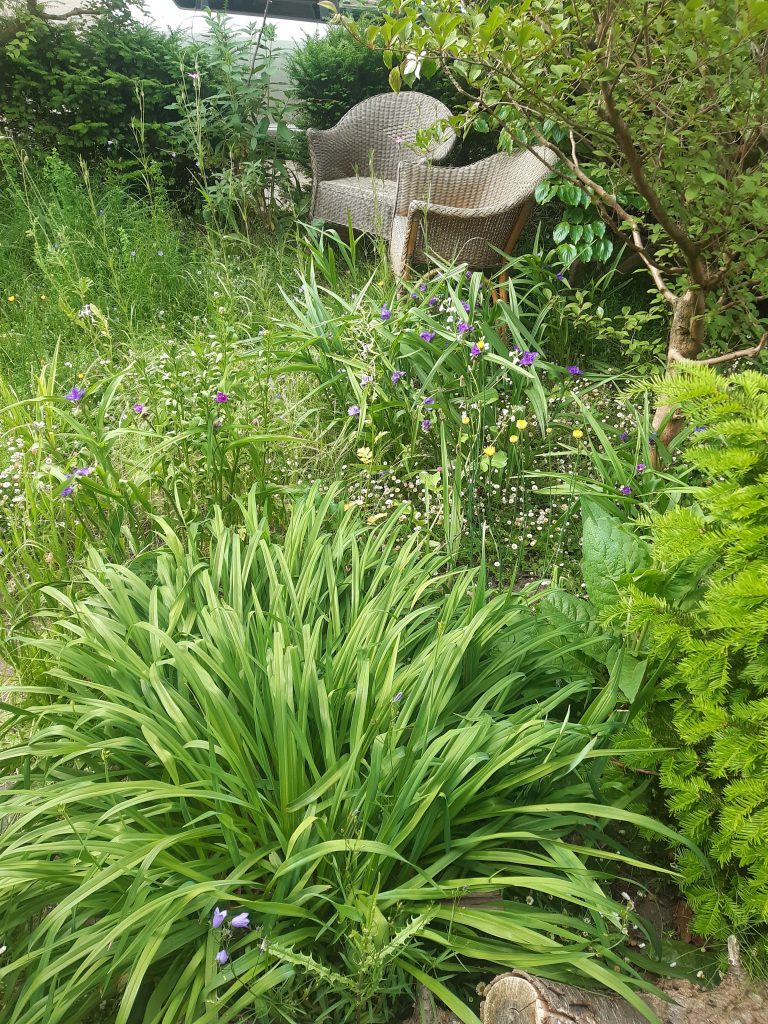
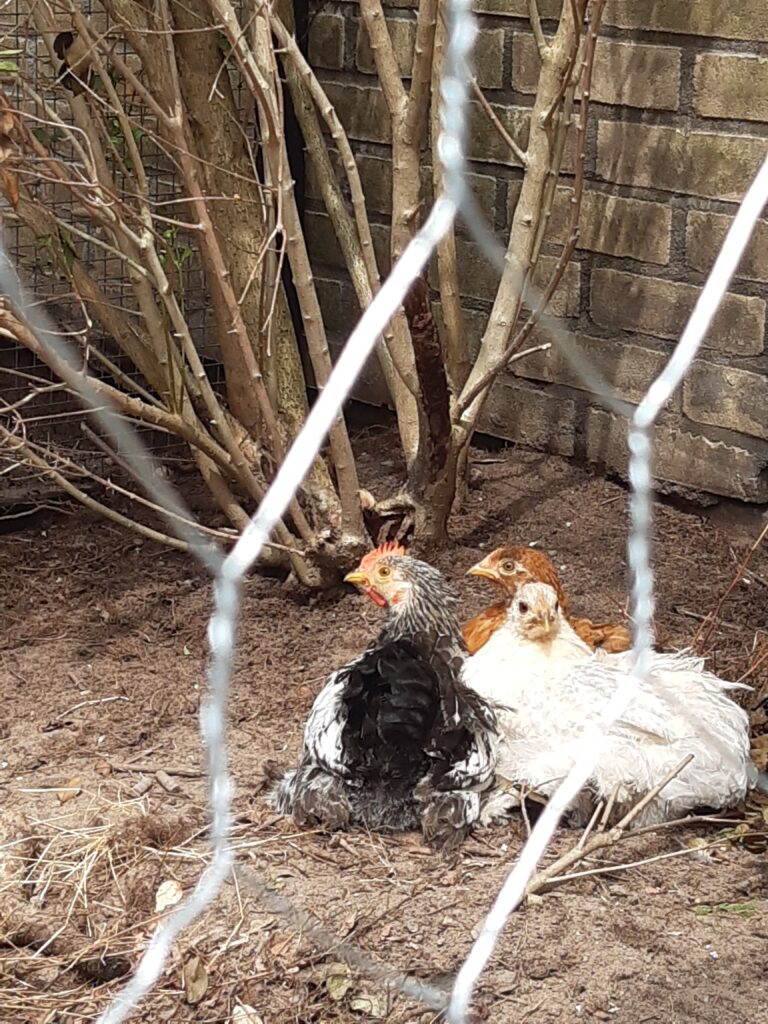
Thanks for sharing your garden and your thoughts with us! I love it!
And I work the same way: writing and household and gardening… it´s good for the brain and the heart!